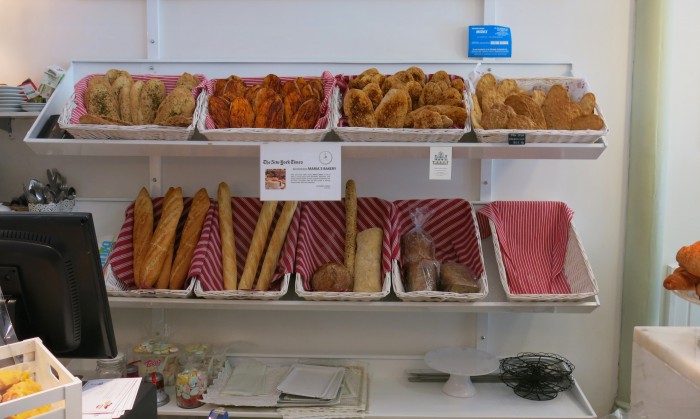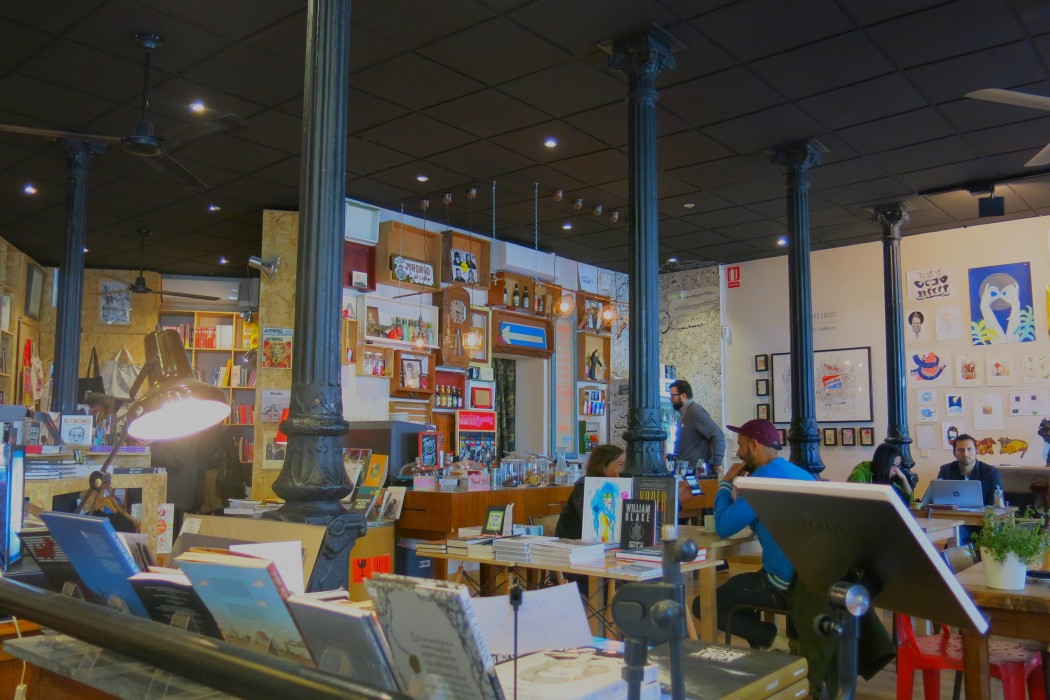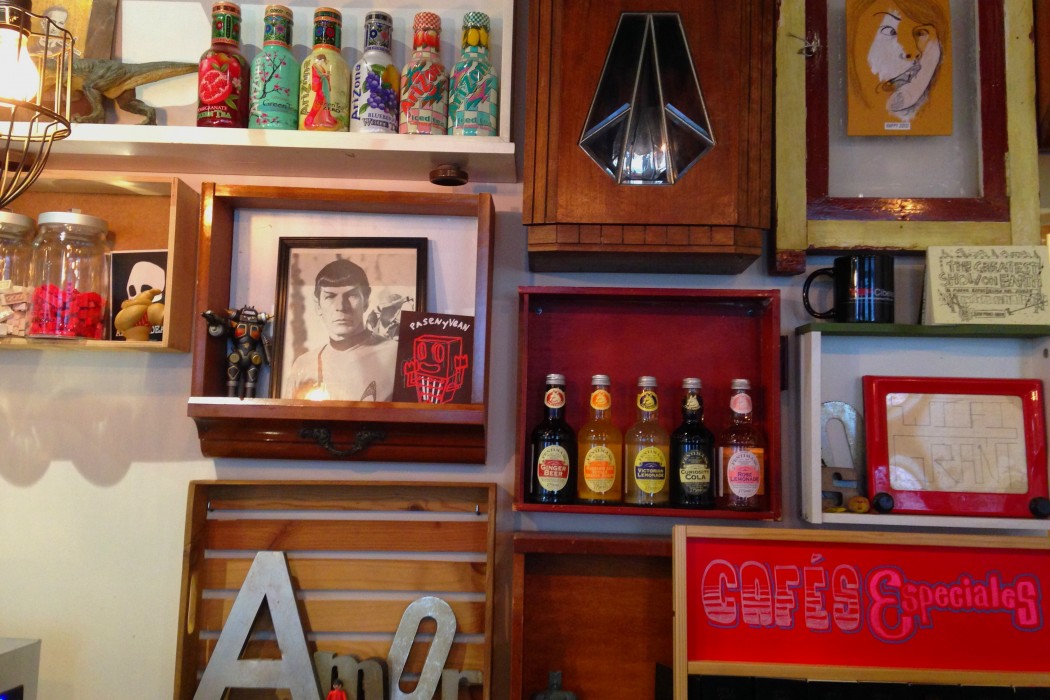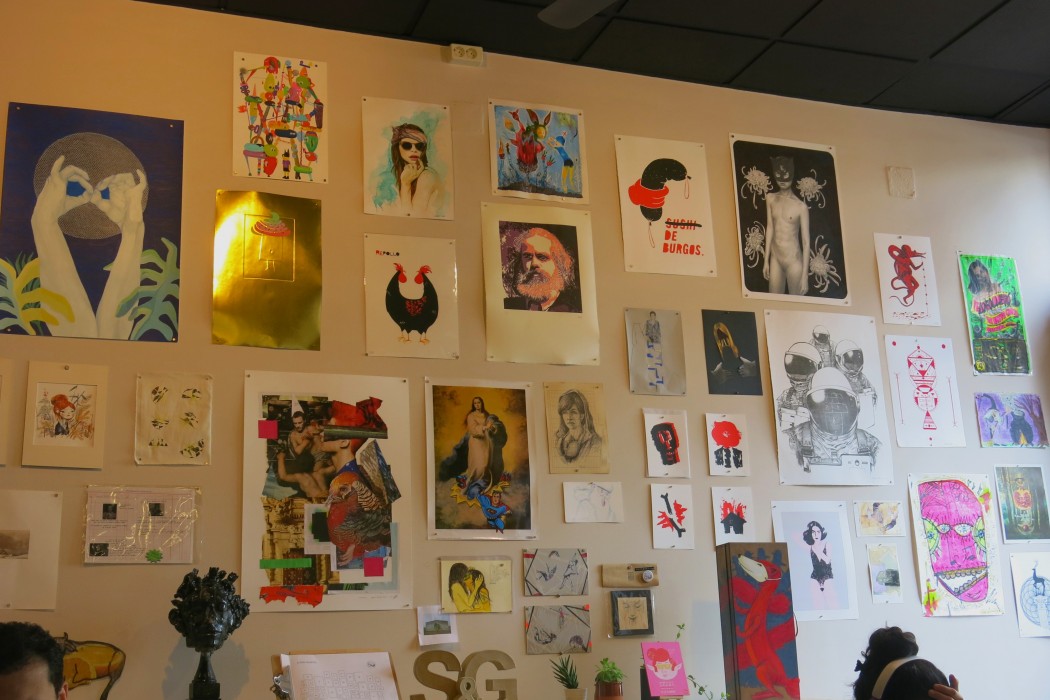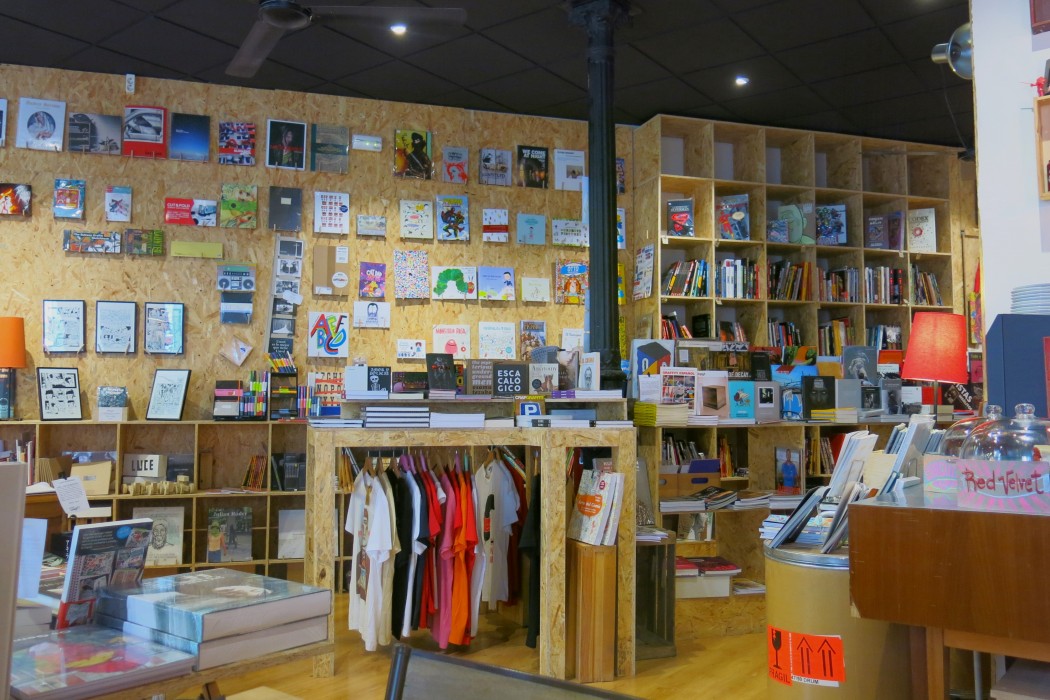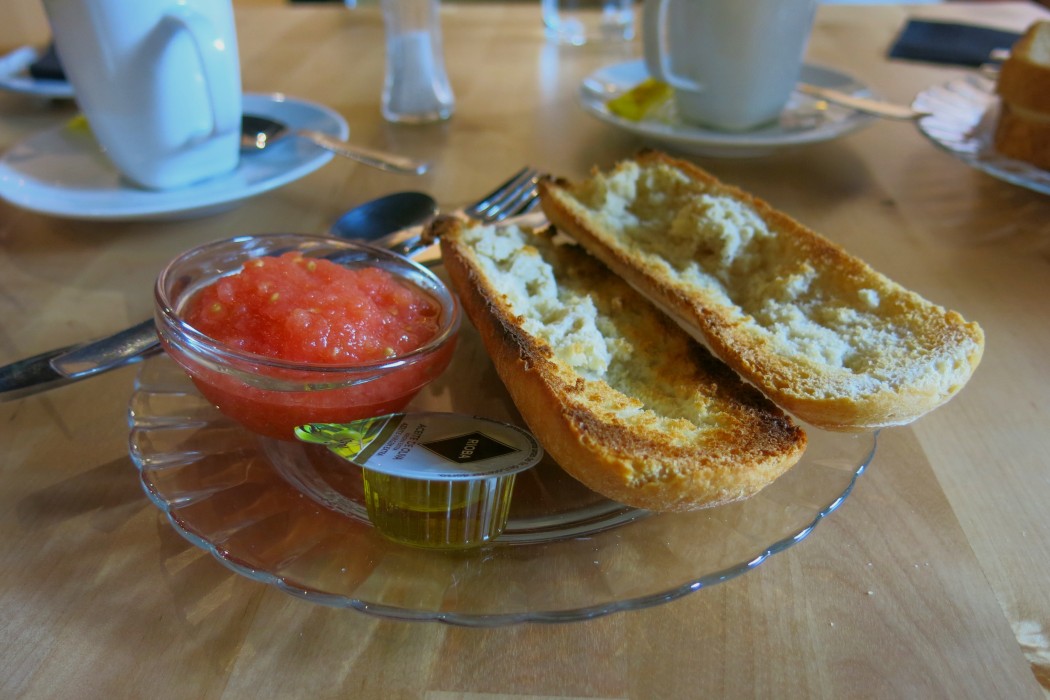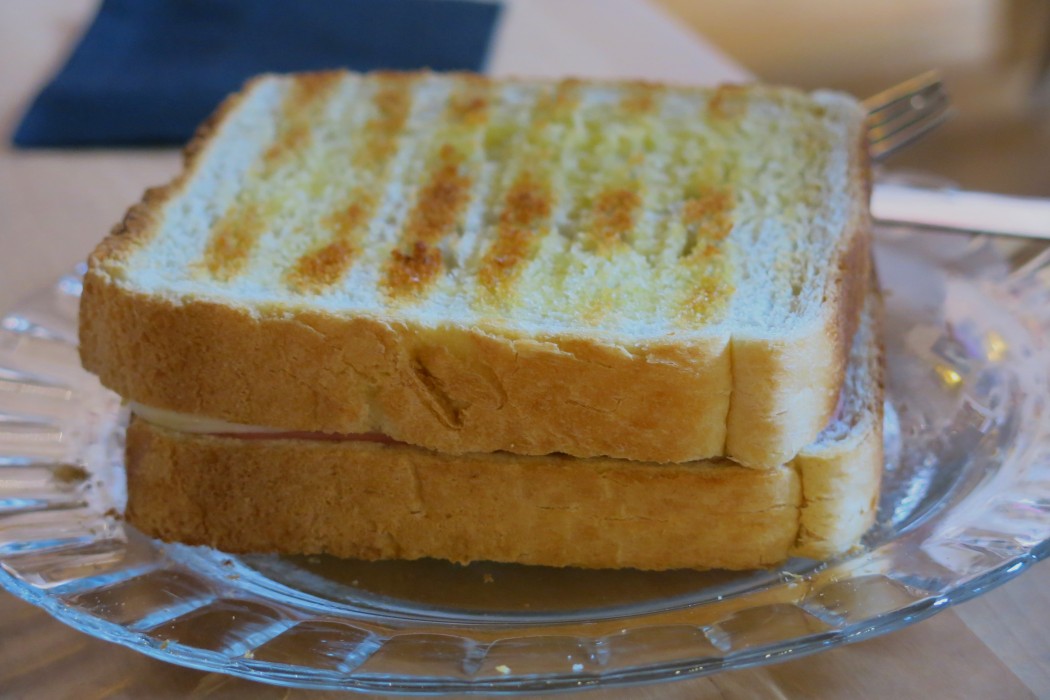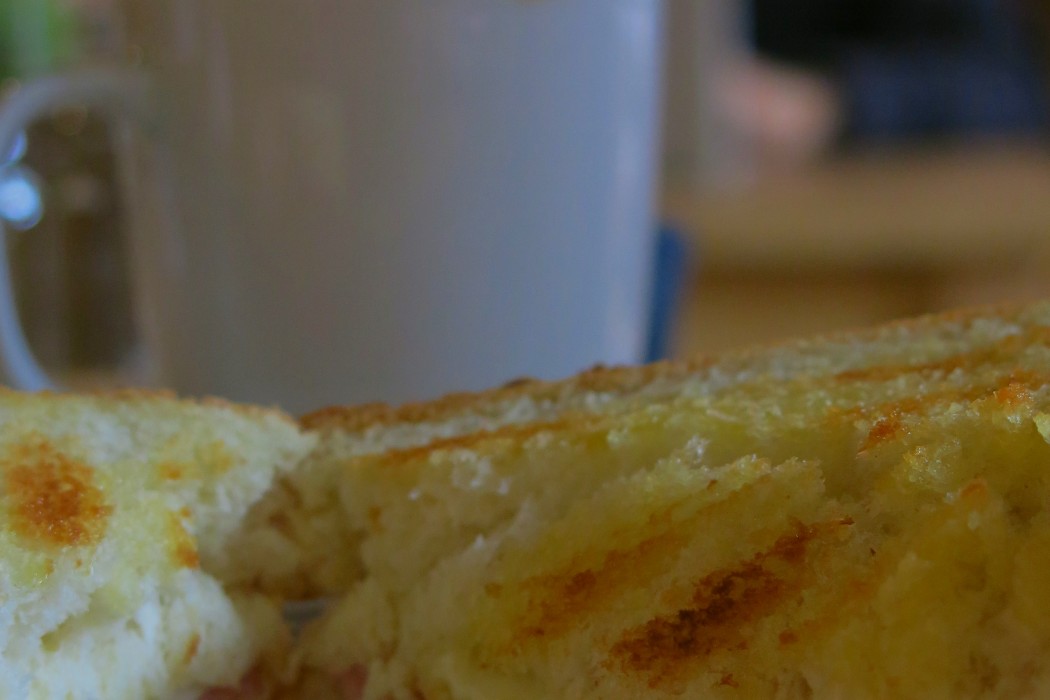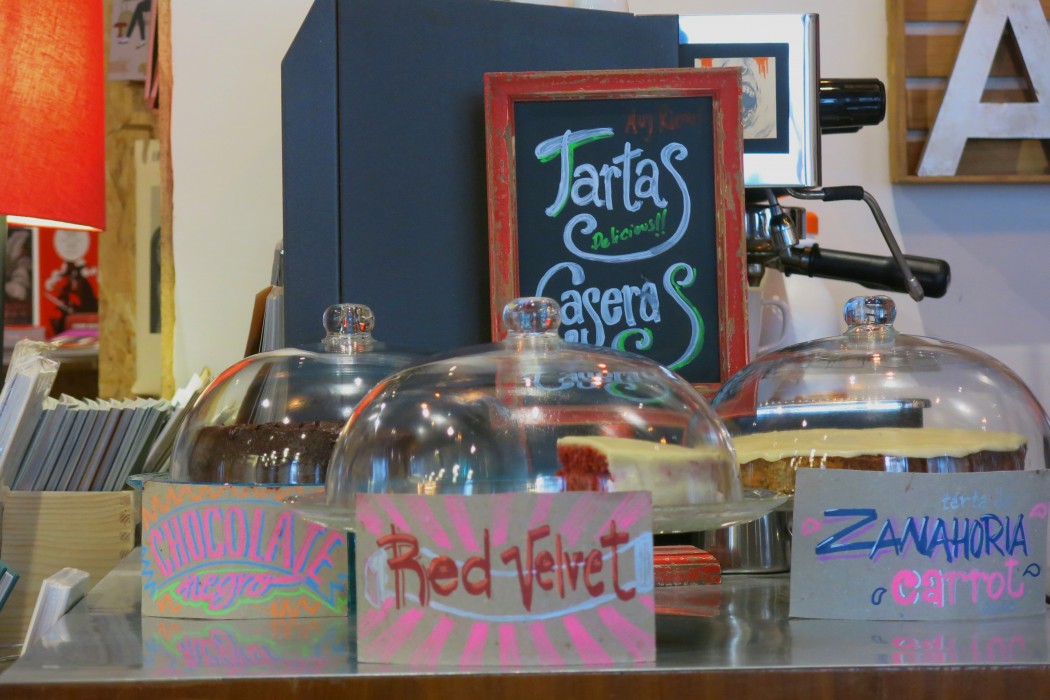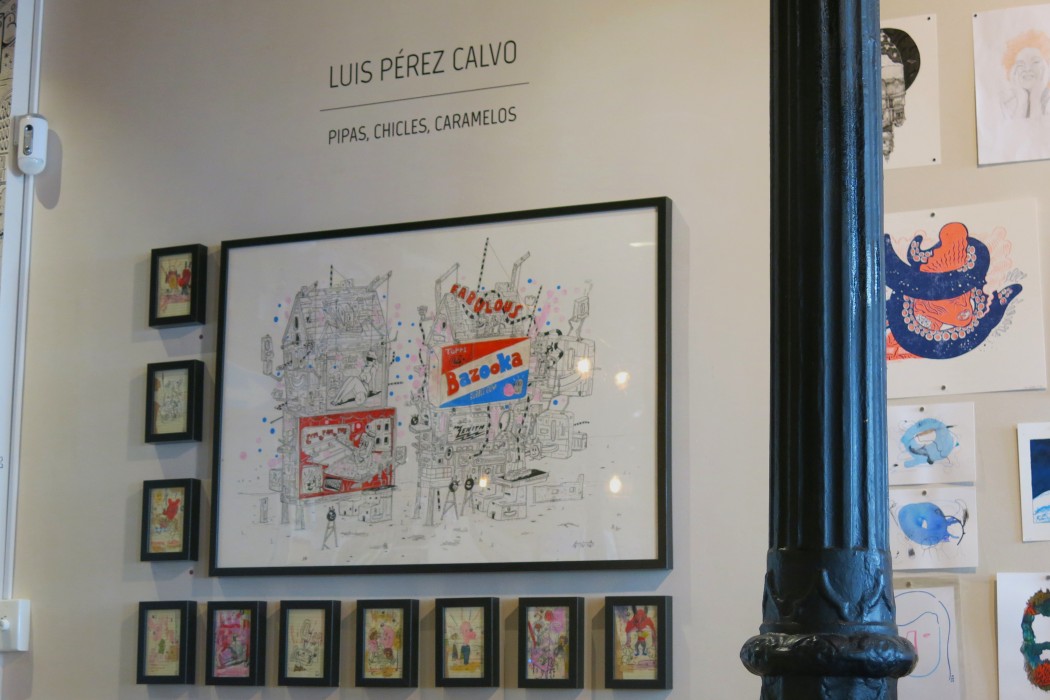Want to sound like a true madrileño/a? Then you’d better learn about food. When foreigners first arrive in Madrid, eavesdropping can confuse. Why is everyone talking about milk? What do politicians have to do with cured sausages? Why do my students shout “oysters!”?
The answers lie somewhere in Madrid’s food culture.
All things Madrid revolve around food. Work, school, family, and free time all have their feet firmly planted in gastronomy. Veteran Auxiliares not-so-fondly remember that first day home from school. Bewildered that Spaniards go 8 hours between desayuno and comida, you greedily shove muesli, bread, and ham into your starving jaws—a cruel introduction into how Spaniards think of food.

Other mealtime nuances scream “welcome to Madrid!” No, you can’t find a good lunch before 1PM, or any food except cold tapas and coffee between the hours of 4PM and 7PM. Half of the reason for eating cocido is for the next day’s ropa vieja—always made best by someone’s abuelita, who fusses over you and asks why you don’t want another glass of wine at 3PM during your sobremesa. Sharing churros con chocolate with your friends at dawn after a night of discotecas is a rite of passage into la vida castiza.
Madrileños have always loved food, and their language is no exception. Madrid’s people garnish, pepper, and marinate their speech with food phrases. From idioms to exclamations, residents of Madrid use food and food words to discuss politics, time, emotion, death, and much more.
So, here’s my guide for the aspiring hispanophone to some of Madrid’s best food phrases.
You’ll see the usual (I’m convinced that oblong vegetables in any language are always sexual) and the not-so-usual (playground bullies “give you milk” while they take your milk money). And all will help you spout the foodie Spanish of a proper Madrid resident.
We’ll stick to a typical Madrid diet: a mountain of bread, a hunk of meat and seafood, good eggs, milk & dairy, a glug of booze, and a small side of greenery and citrus.
Bread
Al pan, pan, y al vino, vino

Quick-marts have plenty of idioms for the curious linguist.
Let’s start with two of Madrid’s favorites: bread and wine. For these two cornerstones of Spanish food, madrileños would appreciate you to be direct—the meaning of this particular phrase. “Al pan, pan, y al vino, vino” (“To bread, bread, and to wine, wine”) is a request to be direct. Using this phrase means you want someone else to call it like it is. Don’t beat around the bush and talk in circles—call your bread “bread!”
Hostia
Speaking of bread and wine, Madrid’s food phrase dictionary deserves an entire page to Communion bread (la hostia). The supposed body of Christ can mean anything from a grave insult to a killer descriptor. Simply shouting “hostia!” (if you’re surprised, or you just smashed your toe on a sofa, or Sunday’s El Clásico is not going your way) is kosher between friends or younger people, but many madrileños may take offense. To describe something as great or large, try de la hostia. After a night of a few too many, you may hear “Hostia! Tengo un melocotón de la hostia!” (see “Fruit & Vegetables” to know why).
Con las manos en la masa
Even the beginnings of bread are not sacred from Spanish turns of phrase. To see someone “con las manos en la masa” (“with their hands in the dough”) is to catch them red-handed. Did you just see Jesús cheating on his exam for the hundredth time? His hands were in the dough!
Estar empanado/a

This one is a great image. To describe the time when someone’s brain isn’t operating at full capacity, a madrileño will say “estoy empanado” (“I am breaded”). Whether that person needs a coffee, is distracted, or simply doesn’t want to focus, their brain is battered.
Un churro

While these fried chunks of bread and sugar are usually excellent, using “churro” to describe something else means that it lacks quality. For example, you may hear one of your students complaining “he hecho un churro en ese examen” (“I made a churro on that exam”), meaning he or she utterly failed.
Esto es pan comido
Is something incredibly easy? Then you may hear a Madrid resident exclaim “esto es pan comido” (“this is eaten bread”). English speakers aren’t too far off from their “piece of cake” or “easy as pie” with this one. Practice these phrases enough, and they’ll be like eaten bread.
Meat

Beautiful people and corrupt politicians.
Estirar la pata
Are there things you want to do before you go into the great beyond? Is someone going to croak? Kicking the bucket? Well, in Madrid, death is like a slaughtered animal—they lie you down, do the job, and then you “estirar la pata” (“stretch out the hoof”).
Jamón
Madrid and pork go together, and so do Madrid Spanish and pork products. After seeing someone attractive across the room, you may hear them described as “el/ella está jamon” (“he/she is ham”). If you refuse to do something, shout “Y un jamón con chorreras” (“Ham with frills!”) to show your disgust.
Chorizo
Pork sausage gets a special mention. While usually a spicy, smoky treat, the word chorizo also means “thief.” A carterista (“pickpocket”) may be described with “qué chorizo!” (“what a sausage!”). Sausage also extends to politics—protestors love the phrase “no hay pan para tanto chorizo” (“there isn’t bread for all this sausage”) to describe corrupt politicians.
Poner toda la carne en el asador
If you’re taking a huge risk, then you’re putting all your meat on the grill (“poner toda la carne en el asador”). Best used at gambling halls, or literally when at a barbeque.
Seafood

Sure it’s on sale, but who’s cutting it?
Ostras!
The quintessential exclamation of Madrid, outside of joder! My guess is that “oysters!” (“ostras!”) is a tamed-down version of “hostia.” Akin to the English “darn” and “damn,” just more nautical.
¿Quien corta el bacalao?
A phrase asked of mafia bosses is “who cuts the cod?” (“¿quien corta el bacalao?”). While seemingly random, the phrase has its origins in industrial traditions; in the comidas of old Madrid, guild masters and supervisors were the ones who served fish to their underlings. Whoever was at the head of the table carving the filet was the big boss.
Me siento como un pulpo en un garaje
Feeling out of place? Like a fish out of water? Then say that you “feel like an octopus in a garage” (“te sientes como un pulpo en un garaje”) for the authentic Madrid vibe.
Eggs

You’re worth a lot!
Tener huevos
Aside from the obvious connection between eggs and rounded male genitalia, madrileños will also shout “la cosa tiene huevos” (“the thing has eggs”) if something doesn’t work properly. Did your blender just start to spark and smoke? It has eggs.
Pisando huevos
Like any big city, Madrid’s day-to-day life can be pretty fast-paced. And, like any big city, you’ll come across people on the sidewalk who are simply walking too slow. While you dodge tourists to get around them, you can mutter that they’re “pisando huevos” (walking [on] eggs).
Te quiero un huevo
Are you crazy about your significant other? Then you “love them an egg” (“querer un huevo”). It’s because “un huevo” can mean “a lot.” Don’t ask. Just say it.
Hasta luego, cara huevo
If you want to sound cutesy, try the Spanish version of “see you later, alligator”: “until later, egg face” (“hasta luego, cara huevo”). It makes about as much sense.
Milk and Cheese

Bags have this stuff printed on them.
Ser la leche
If “hostia” deserves its own page in Madrid’s food dictionary, milk merits its own chapter. As an opaque white liquid, milk has its sexual euphemisms. But, if something “is the milk,” it’s quite awesome. If everything’s going your way, try “hoy ha sido la leche” (“today has been the milk”).
Estar de mala leche
Milk is good, but all milk will go bad. In this case, Madrid speakers say someone “está de mala leche” (“is of bad milk”) when they’re grumpy. Chronic/permanent sufferers of bad milk “tienen mala leche” (“have bad milk”) in their systems.
Me cago en la leche
By itself, “I crap in the milk” (“me cago en la leche”) can be a general exclamation of disappointment or anger. But, in conversation, it can hold all the hatred and disgust that a bowl of milky waste can possess. Save this one for when you mean it: “me cago en la leche de la puta que te date la luz/la puta madre que te parió” (“I crap in the milk of the whore mother that birthed you”).
Ir a toda leche
When someone is “going full milk” (“ir a toda leche”), they’re running full out. Full milk’s opposite would be “pisando huevos” (see “Eggs”).
Dar una leche
When someone smacks or hits you, they “give you milk” (“te da una leche”).
Que no me lo des con queso
A bit of gastronomy trivia: very high-quality wine is enjoyed by itself. For the snobby, consuming cheese with wine ruins the experience of both. The fats from the cheese coat the inside of your mouth, limiting how much you can taste the wine.
As such, madrileños shrewdly ask “que no me lo des con queso” (“don’t give it to me with cheese”) to tell someone to stop ripping them off. It’s to help avoid life’s various glasses of tintorro (see “Alcohol”).
Blanco y en botella? Leche
Do you want to say that something’s obvious? As obvious as something that’s white and in a bottle (“blanco y en botella”)? Then try this phrase. Duh.
Alcohol

Botellón
Stay in Madrid for more than an afternoon with the younger crowd, and you’ll have learned botellón. Part hang-out, part pre-game, part illegal, Madrid’s party crowd gather in public spaces to drink “a big bottle” (“botellón”), usually of tinto de verano (red wine and fruit soda), calimocho (red wine and Coca-Cola), beer, or something harder. Controversial yet characteristic.
Garrafón
Some people swear that some bars will “give it to you with cheese” by filling their empty bottles of fancy liquor with trashy, bottom-shelf spirits. These liquors, the ones that melt your brain and lead to the worst resacas you’ve ever had, are called “gas cans” (“garrafones”).
Tintorro
There is the good stuff, and then the not-so-good stuff. The wine equivalent of a garrafón. Usually used to make calimocho during a botellón.
Fruits & Vegetables

Ajo y Agua
The Hispanic world likes optimistic phrases. Some choose “no pasa nada” (“nothing happens”). Others choose “resolver”(“determine”). Some madrileños go for the vulgar: “garlic and water” (“ajo y agua”), a shortening of ajoderse (“to f*ck yourself”) and aguantarse (to suck it up). A nice message wrapped in a bitter casing.
Campo de nabos
What did I say about oblong vegetables? A “turnip field” (“campo de nabos”) is a “sausage fest”—a party with only men. You understand the image.
Melocotón
If you “have a peach” (“tienes un melocotón”), you have a hangover. An alternative is cebollón (“big onion”), meaning the same thing. Who knew having produce meant you had one too many last night?
De uvas a peras
There’s someone you get along with really well, but you only see him/her once a year or so. What we’d call “once in a blue moon” in English changes to “from grapes to pears” (“de uvas a peras”) in Madrid Spanish. The expression comes from the agriculture—vintners harvest grapes in September, and farmers pick their pear orchards in August. If counting from grapes to pears, there’s nearly a full year before you’ll see that person again.



